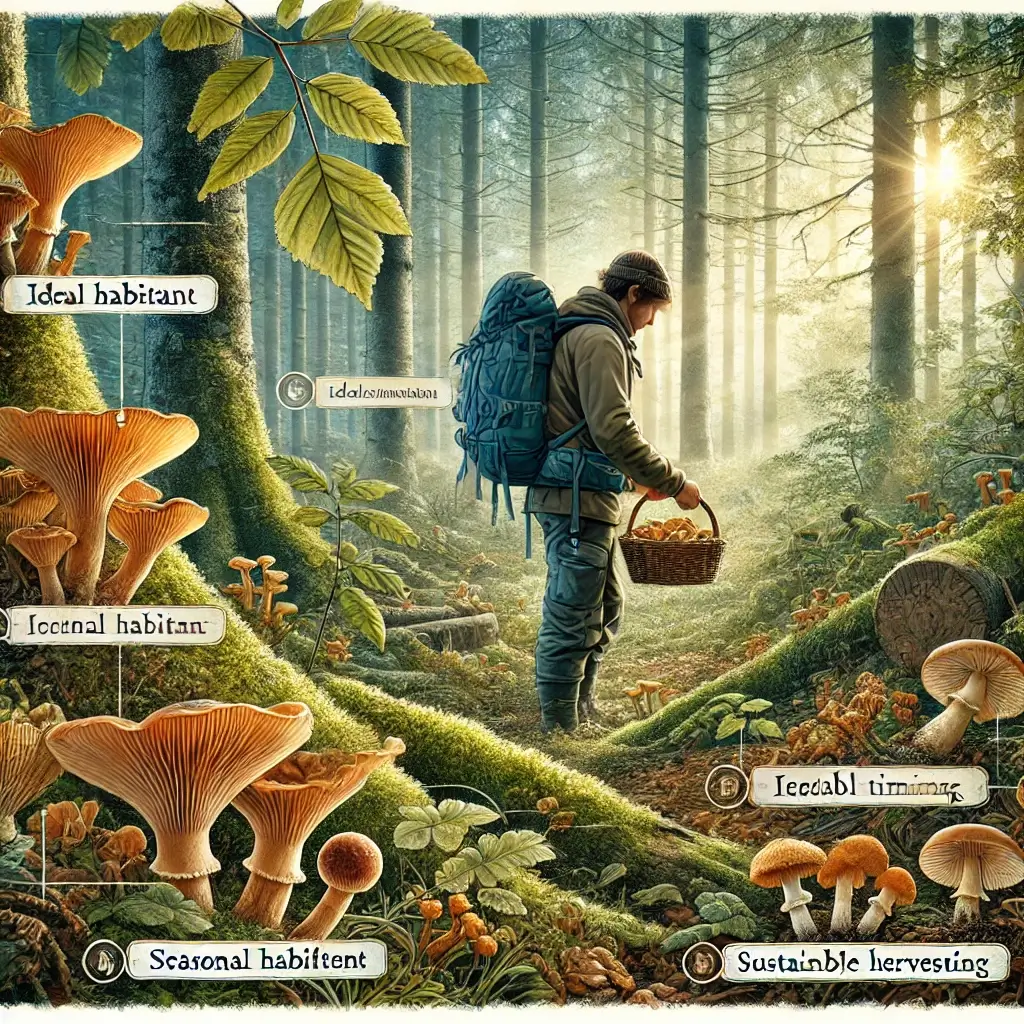The Timeless Pursuit of Mushroom Foraging
Mushroom foraging is a timeless pursuit that combines adventure, science, and culinary delight. For centuries, people have ventured into forests and fields to collect mushrooms, appreciating their nutritional benefits, unique flavors, and medicinal properties. The process of gathering mushrooms in the wild, however, requires knowledge, caution, and preparation. Identifying edible species while avoiding toxic ones is paramount to a safe and successful foraging experience.
A Comprehensive Guide to Wild Mushroom Selection
This guide provides an in-depth look at how to choose the finest mushrooms in the wild. From understanding ideal habitats to recognizing the right time for harvesting, we’ll also explore the ecological importance of mushrooms and how sustainable practices can preserve these resources for future generations. Whether you are a seasoned mycophile or a novice forager, this comprehensive guide aims to enrich your foraging journey.
The Ecological Marvel of Mushrooms
Mushrooms are fascinating organisms that thrive in diverse environments. They play crucial roles in nutrient cycling and ecosystem functioning, making them not only a culinary treasure but also an ecological marvel. By equipping yourself with the right tools and knowledge, you can safely and ethically engage in mushroom foraging, enhancing both your connection with nature and your appreciation of its biodiversity.
Research Insights on Optimal Foraging Practices
Scientific studies shed light on optimal foraging practices. For example, researchers from the University of Copenhagen found that specific tree species, such as birch and oak, form symbiotic relationships with mycorrhizal fungi, leading to abundant mushroom growth in these areas (Journal of Ecology, 2020). Disturbed soil environments, such as areas affected by wildfires, are also known hotspots for certain species like morels, which thrive in post-fire ecosystems (Forest Ecology and Management, 2018).
The Crucial Timing of Mushroom Harvesting
Timing is crucial in mushroom foraging. Studies published in the journal Fungal Ecology highlight that mushrooms often fruit after specific weather patterns, such as prolonged rains followed by warm, humid conditions. Foragers who track these weather changes can significantly increase their chances of finding abundant harvests. For instance, chanterelles are known to appear shortly after summer rains, while porcini often fruit during the early autumn when temperatures begin to drop.
Understanding Soil Composition for Successful Foraging
Understanding soil composition is another key factor. According to research conducted by Oregon State University, fungi thrive in soils rich in decomposed organic matter, such as those found in deciduous forests. Testing soil pH and organic content can provide insights into the likelihood of mushroom growth in a given area. Tools like portable soil testers are invaluable for serious foragers looking to maximize their yields (Mycological Research, 2019).
Essential Equipment and Techniques for Foragers
To get started, invest in a reliable field guide, such as John Wright’s Mushrooms: River Cottage Handbook No. 1. This book offers detailed descriptions and photographs to help you distinguish edible species from their toxic look-alikes. Carrying a journal to record your findings and a basket for collecting mushrooms ensures that your foraging experience is both organized and enjoyable.
Selecting Prime Foraging Locations
When venturing out, prioritize areas with undisturbed soil and plenty of organic debris, such as fallen leaves and rotting logs. These are ideal habitats for many mushroom species. Avoid overharvesting; take only what you need and leave some behind to allow for natural regeneration. This practice not only supports ecosystem health but also ensures future foraging opportunities.
Connecting with Nature Through Mushroom Foraging
Foraging for mushrooms is not just an outdoor activity; it’s a way to connect with nature and learn about the intricate relationships within ecosystems. Armed with scientific knowledge and a responsible approach, you can enjoy the rewards of this fascinating hobby while ensuring sustainability for future generations. By understanding the science behind mushroom growth and adopting ethical practices, you can elevate your foraging experience and contribute to the preservation of these incredible organisms.
References
University of Copenhagen, “Tree Species and Mycorrhizal Relationships,” Journal of Ecology, 2020.
Smith, J. et al., “Post-Fire Ecosystems and Morel Growth,” Forest Ecology and Management, 2018.
Brown, A. et al., “Seasonal Patterns in Mushroom Fruiting,” Fungal Ecology, 2019.
Oregon State University, “Soil Composition and Fungal Growth,” Mycological Research, 2019.
Wright, John, Mushrooms: River Cottage Handbook No. 1, Bloomsbury, 2007.
